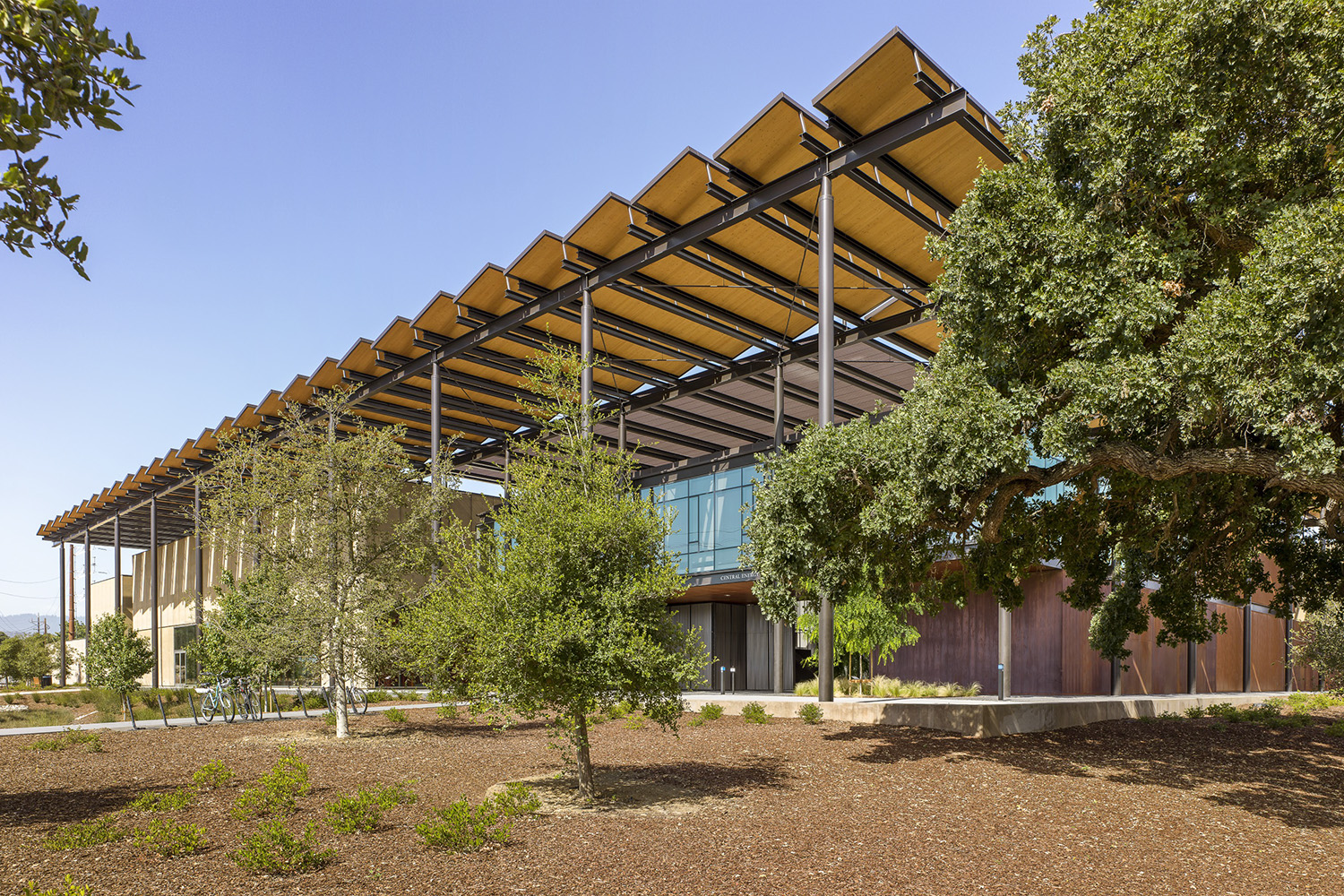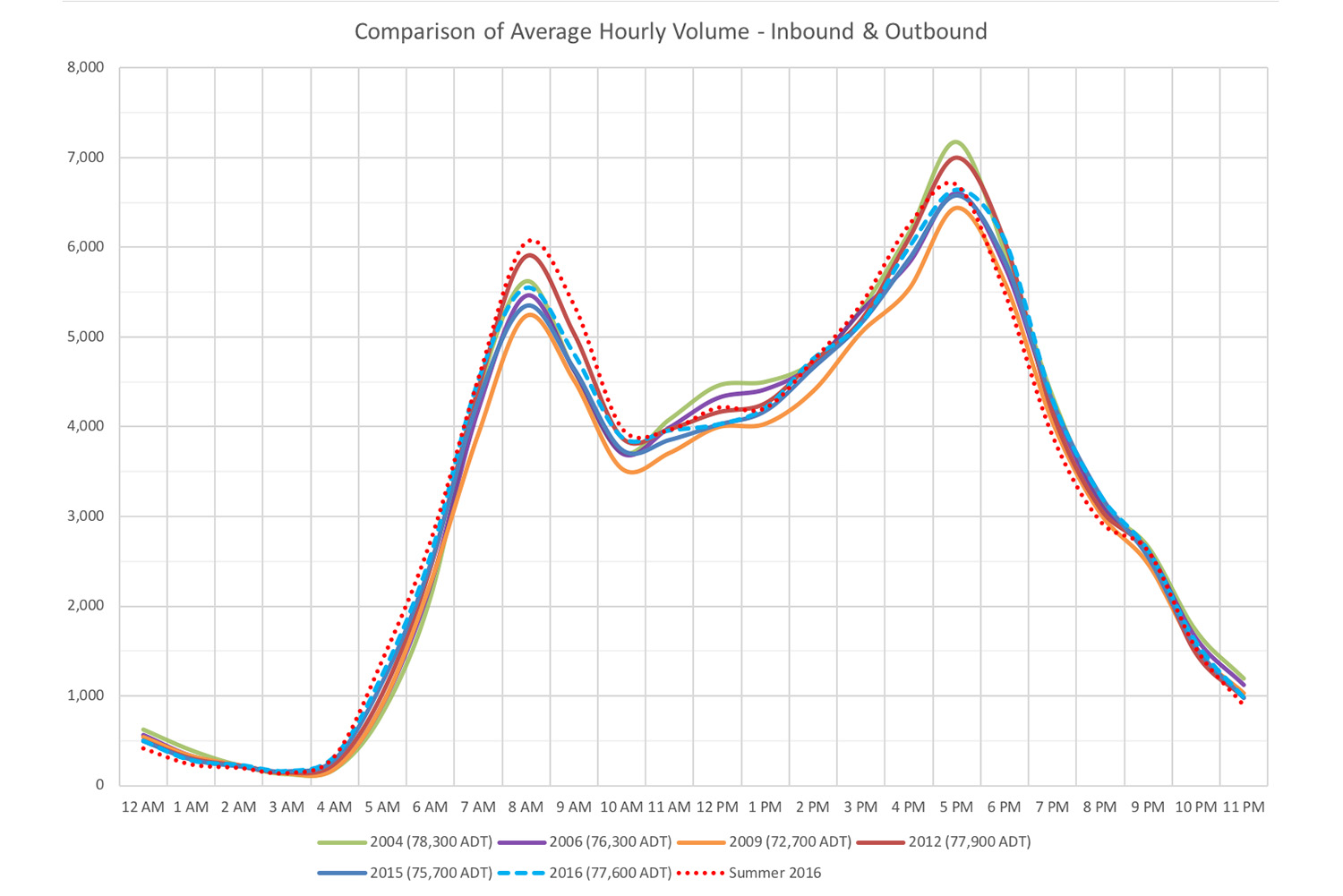Stanford’s General Use Permit application reaches major milestone
Santa Clara County has issued a final environmental impact report confirming earlier analysis that the land use permit is an environmentally sustainable and responsible plan.
Stanford’s application for a long-term land use permit took a significant step forward on Wednesday with Santa Clara County’s release of the final environmental impact report (EIR).

Stanford’s Central Energy Facility, constructed under the current General Use Permit, significantly reduced campus greenhouse gas emissions. (Image credit: ZGF Architects LLP; Robert Canfield)
The 2018 General Use Permit applies to university lands in unincorporated Santa Clara County, including the academic campus and Stanford foothills, and would allow the university to build 3,150 housing units concurrently with 2.275 million square feet of academic facilities over a projected 17-year timeframe.
The report confirms earlier analysis in the draft environmental impact report and subsequent county studies that almost all environmental impacts of new academic and residential facilities can be appropriately prevented or mitigated.
The final EIR includes the county’s responses to all comments made on the draft version of the report and verifies the data and methodology used in the application, as well as the environmental sustainability of Stanford’s proposal.
“We are pleased that the final EIR validates the careful planning that went into the 2018 General Use Permit application,” said Catherine Palter, associate vice president for land use and environmental planning. “The result of that process is a proposal that balances the needs of the university and the community while addressing potential impacts over the life of the permit.”
Also in the report is new county data showing that the average number of vehicles entering and exiting Stanford’s academic campus throughout the day has remained consistent since 2004.
Areas of community interest
County responses to comments on the draft EIR address public input on a variety of issues, including housing, open space, schools and greenhouse gas (GHG) emissions. Among the notable responses in the final EIR:
- Housing: While Stanford’s proposed 3,150 housing units will be for its faculty, staff and students, the housing section of the county’s General Plan recognizes that Stanford’s housing stock “benefits the wider community by augmenting the local housing supply,” thereby reducing countywide demand.
Santa Clara County previously studied two alternatives to Stanford’s application to help the public and decision-makers understand the implications of providing higher levels of housing than the 2018 General Use Permit application proposed. Alternative A examines the environmental impacts of adding a further 2,549 housing units and student beds on Stanford’s campus in addition to the 3,150 Stanford proposes, and Alternative B studies half of that increased amount, or 1,275 additional units and beds.
The final EIR reinforces the analysis that adding the amount of housing studied in the alternatives “would result in overall greater environmental impacts than the proposed Project.” Adding 2,549 more housing units under Alternative A would instead create “three new significant and unavoidable air quality impacts related to an additional on-campus residential population and associated increase in daily vehicle trips. Both Additional Housing Alternatives A and B would, to varying degrees, also increase peak-hour vehicle trips and congestion … and further increase impacts at off-campus public parks.”
The final EIR also recognizes that the housing alternatives would negatively affect Stanford’s ability to meet its goal of reducing single-occupancy vehicle commute trips through Transportation Demand Management (TDM) programs. - Open space: Stanford’s application does not propose any new facilities in designated open space, including the foothills and arboretum. A comment on the draft report requests that “as part of mitigation, to permanently set aside the Dish as open space, and permanently set aside pasture land visible south of Page Mill Road, between I-280 and Foothill Expressway,” to which the county responded, in part: “No specific Project or cumulative aesthetic/visual or other impacts are identified in the Draft EIR that require permanently setting aside such open space land as mitigation.” Because the university’s application does not request the development of new facilities in these areas, there is no risk of impacts to designated open space.
- Public schools: There is no impact to Palo Alto Unified School District (PAUSD) requiring mitigation to address prospective new students living in on-campus housing. The county concludes that the student generation rate of 0.5 students per new faculty/staff housing unit used in the draft EIR “is more than 30 percent higher than [the] actual student generation rate of 0.38 for existing Stanford faculty/staff housing, and is therefore conservative.”
Due to declining school district enrollment forecasts, “sufficient capacity in PAUSD elementary, middle and high school categories would likely exist to accommodate Stanford’s estimated new students that would be generated by the Project and additional housing alternatives over the course of the proposed 2018 General Use Permit.” - GHG emissions: The final EIR confirms that “the total GHG emissions under the proposed 2018 General Use Permit would be at or below … the 2018 baseline.” Emissions would also be below the threshold required to meet state reduction goals for 2030 and 2050. “As such, the proposed Project would not generate GHG emissions, either directly or indirectly, that would make a cumulatively considerable contribution to a significant impact on global climate change,” and no mitigation is required. Stanford recently announced that it will complete its transition to 100 percent renewable electricity and reduce campus GHG emissions by 80 percent below peak levels by 2021.
New transportation data
In response to comments on the draft version of the report, the final EIR includes new data about average daily car trips over the course of the entire day, and the distribution of trips throughout the day. The all-day annual trip counts conducted by Santa Clara County have verified “that (1) the average daily number of vehicles entering and exiting the campus has not increased over time, (2) the average daily number of trips entering and exiting the campus is not substantially different during summer months compared to the months when Stanford offers a full course load, and (3) there has been no shift in vehicle traffic from one campus gateway to another. The data are consistent from year to year.”

The final EIR shows that the daily number of cars entering and exiting Stanford’s academic campus, including non-Stanford cars, and the distribution of those vehicle trips throughout the day, has remained consistent. Click image to enlarge. (Image credit: Santa Clara County Department of Planning and Development)
The all-day cordon counts at campus gateways are used by the county’s consultant to identify the peak inbound and outbound commute hours for that year. Non-Stanford vehicles are removed from the count using license plate surveys during the peak hours. It is this final count that is used to monitor whether or not Stanford is meeting the goal of no net new automobile trips during peak commute times that it has successfully adhered to since 2004, the first year for which monitoring data is available.
In addition to average daily trips remaining consistent, the final EIR also verifies that while commute patterns elsewhere in the region may have shifted, Stanford commuters are not shifting their travel times to outside the peak commute traffic period to avoid traffic and congestion, nor is the peak commute time spreading at Stanford campus gateways. The report states that “There is no evidence that extending the monitoring period to the peak period, such as 7-9 AM and 4-7 PM, rather than the peak hour would change the conclusion that Stanford has maintained trips at a level that is less than the baseline identified in 2001.”
The final EIR also contains a refinement of the No Net New Commute Trips mitigation to address reverse-commute direction trips. The draft report had analyzed all impacts of trips coming to and from the campus, in both directions, during the peak commute hours. However, under its annual mitigation program, the county does not count trips in the reverse commute direction (leaving the campus in the morning and arriving in the evening) toward the No Net New Commute Trips standard. Historical data shows that reverse-commute trips have not presented a problem because Stanford’s TDM programs have successfully removed trips in both directions.
However, the final EIR acknowledges that in the future, reverse-commute trips might increase with the construction of more on-campus housing for faculty and staff. Therefore, the report identifies mitigation for the potential impacts from the trips, a step that is responsive to input from local residents and jurisdictions, including the City of Menlo Park.
Under this additional mitigation requirement, Stanford will front-load fair share payments to address all intersection impacts that potentially could be associated with reverse-commute direction trips, using the most conservative assumption that Stanford’s transportation programs will not remove any of them.
“Stanford supports building more housing for the Stanford community, which will help relieve regional housing demand. Because that housing may create additional traffic impacts in the reverse commute direction, we’re committed to proactively addressing those potential impacts,” said Palter.
Public input and next steps
The report describes the significant public outreach conducted throughout the environmental review process, including three different public comment periods totaling almost 200 days and seven public meetings in nearby jurisdictions.
Stanford is currently in discussions with Santa Clara County on a development agreement that would provide additional community benefits in exchange for regulatory certainty over the duration of the 2018 General Use Permit.
The county has released a timeline outlining the remaining steps before a final decision is made on the application. When development agreement discussions conclude, tentatively slated for mid-February, the complete set of materials, including the original application, final EIR, and a possible development agreement, will go before the Santa Clara County Planning Commission in March and April prior to final consideration and action by the Board of Supervisors in May and June.
Members of the Stanford community and local residents will have opportunities to submit comments in writing and at public meetings throughout the remainder of the application process.
More information is available on the 2018 General Use Permit website.
